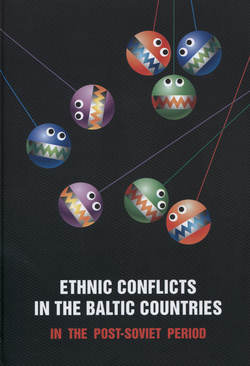Читать книгу Ethnic Conflicts in the Baltic States in Post-soviet Period - Сборник статей - Страница 14
Baltic national minorities as victims of selective weapons of mass destruction
Vladimir Viktorovich Buzaev, Ph.D. in Geology and Mineralogy
Co-chairman of the Latvian Human Rights Committee
Demographic collapse
ОглавлениеThe addition of the general demographic depression in Europe to the disastrous consequences of the collapse of the USSR has lead the fact that only the former republics of the European part of the USSR and the countries in its spheres of influence (see Table 1) have joined the leaders in the population decline in the last 20 years.
Table 1
Leaders of demographic decline in Europe*
* Data for each country are taken from corresponding articles in Wikipedia. Data for Albania and Armenia are from 1989. Data for Georgia and Moldova have been calculated or the beginning of 1990. For comparison, in World War II USSR lost 14 % of the population.
Comparison of the 1989 and 2011 data shows that the share of the population decline due to the decline in the ethnic minority population is 42 % for Lithuania, 71 % for Estonia and 83 % for Latvia. At the same time, the share of ethnic minorities in the population of these countries in 1989 was 20 %, 38 % and 48 % correspondingly, and 16 %, 32 % and 38 % in 2011.
The main reason of the population decline is emigration: 65.3 % before 2000 and 61.6 % in 2000–2011 in Latvia.[1] Fragmentary data on the ethnic composition of the emigrants (Table 2) indicate that non-ethnic Latvians constitute the overwhelming majority among those leaving the country in the first period and the absolute majority in the second period.[2]
Table 2
Ethnic composition of emigrants from Latvia
However, both birth and death rate values vary significantly between the native population and ethnic minorities (Table 3). At the same time demographic values of ethnic minorities in the Baltic States are substantially worse than those in the countries of their ethnic origin.
Table 3
Birth, date and natural increase rate of main ethnic groups in Latvia and Estonia, as well as main countries of origin of ethnic minorities (per thou)[3]
The example of Latvia has proven[4] that such drastic differences can be explained by neither assimilation, special aspects of settlement of ethnic minorities nor the deformation of the age structures in the ethnic groups due to the existing mass emigration and differences in birth rate.
1
Vladimir Buzayev. Legal status of Russian-speaking minority in Latvia. 2012, page 21. 21.
2
Ibid., page 23.
3
Conversion of the absolute data of Central Statistical Bureaus of Latvia and Estonia. No similar data are collected in Lithuania. Number of newborns is based on mother’s ethnicity. Data for the countries of origin of the ethnic minorities are taken from corresponding Wikipedia articles for each country.
4
Vladimir Buzayev. Legal status …, Chapter 1.
